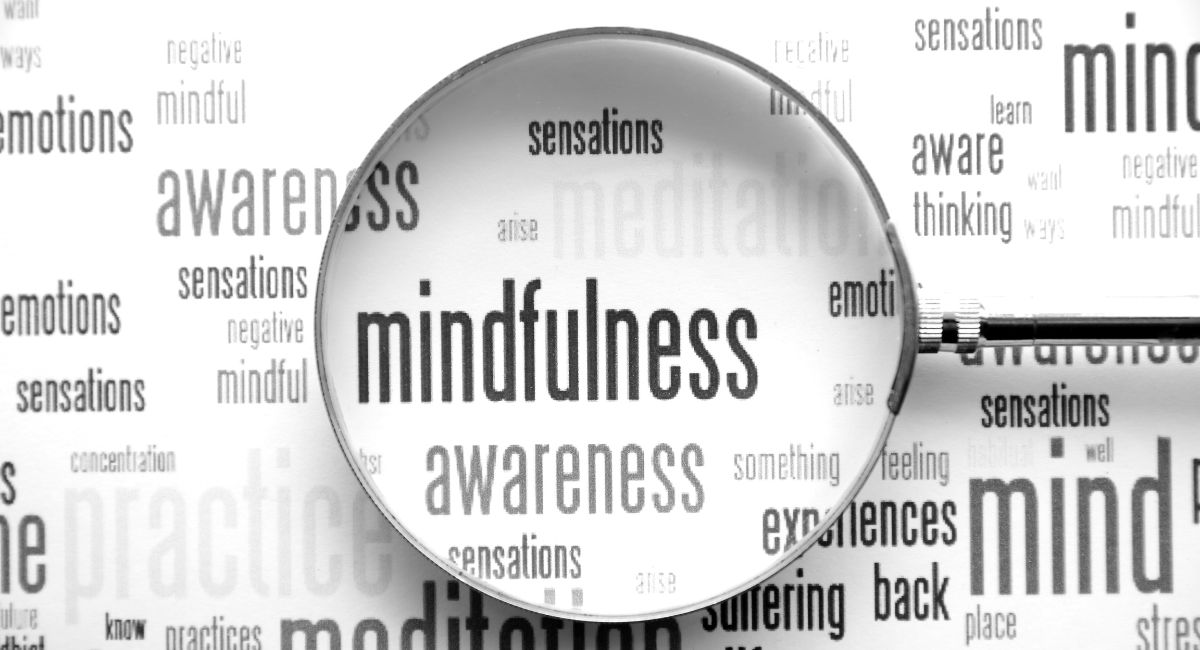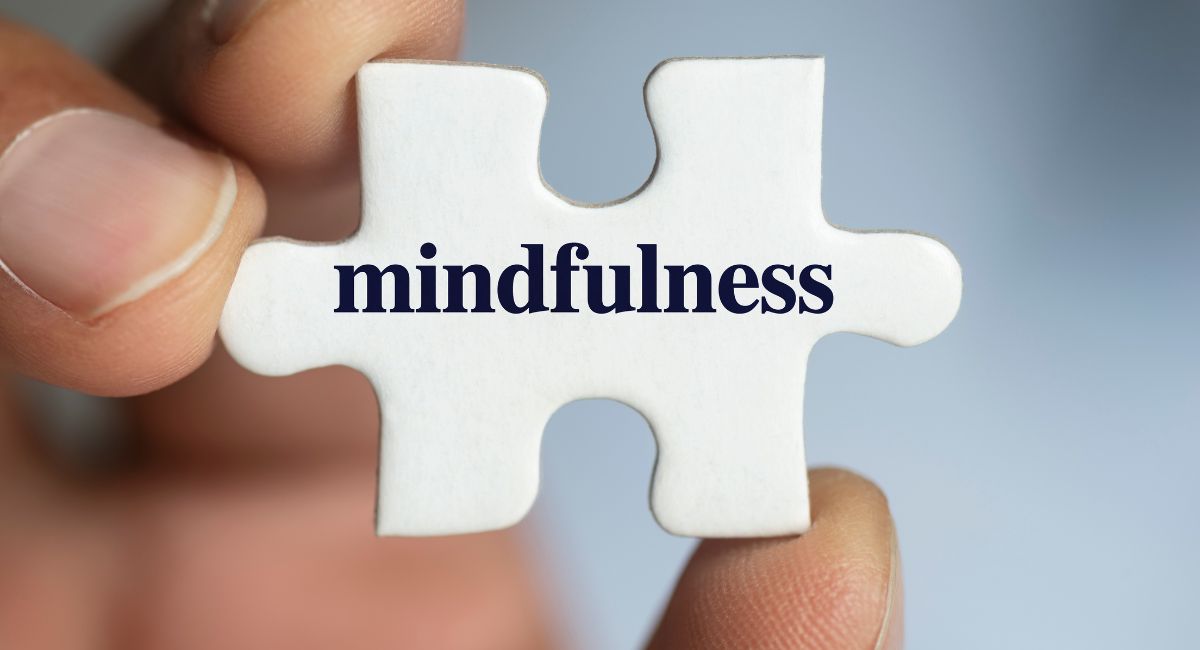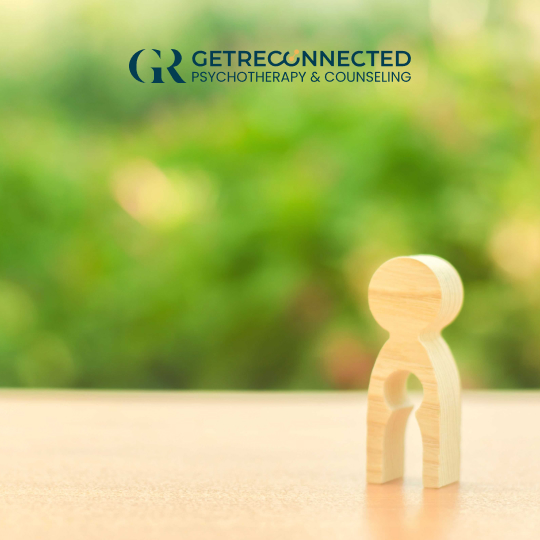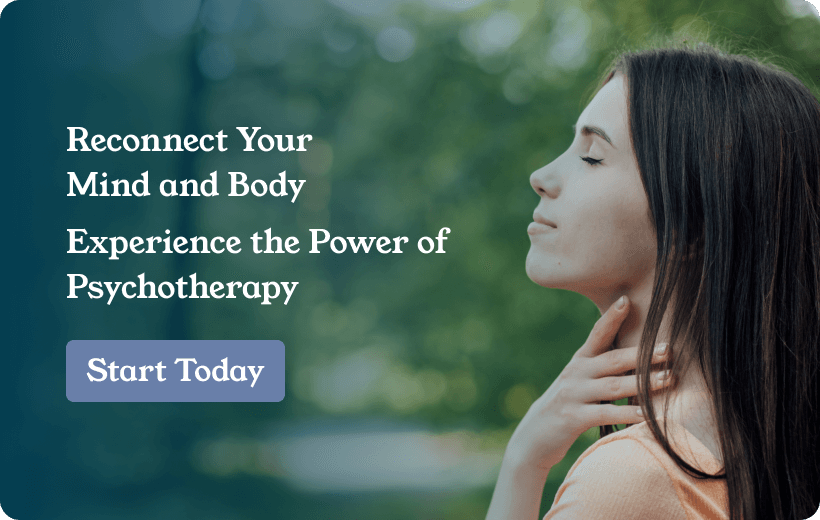What are the health benefits of mindfulness and how can it help us?
Ever feel like your mind is constantly buzzing with thoughts, hopping from memories of yesterday to plans and worries for tomorrow?
Our minds are incredibly adept at problem-solving, but it tends to resist quieting down and being in the present moment. Instead of being fully engaged in the here and now, our minds frequently travel back and forth through the past and future.
As a result, our minds become cluttered with thoughts, stories, and narratives that may not be relevant to our current reality. At times, our thoughts can even become entangled in fictional tales that have nothing to do with reality.
Fortunately, we have a powerful tool at our disposal: called mindfulness. This practice holds the key to turning off this mental chaos, although it requires a deliberate commitment and regular practice.
In this blog, we’re going to unpack what it is, the benefits it brings, and some straightforward techniques that you can easily start applying into your life.
If you’re interested in integrating mindfulness into your daily life, you’ve come to the right place.

Table of Contents
ToggleWhat is Mindfulness?
Beyond being a buzzword, mindfulness is a discipline rooted in Buddhist meditation. It is all about repeatedly redirecting the attention to the current moment, gently and without judgment or distraction. It’s like shining a bright light on your experiences as they happen.
According to the literary definition, it refers to cultivating a heightened awareness of the present moment, paying attention to our thoughts and feelings without passing judgment. In simpler terms, it means being fully awake in our daily lives.
According to Dr. Kristin Neff, a pioneering researcher in the field of self-compassion defines mindfulness as the “awareness of present-moment experiences with acceptance.” She further notes that it is a state where one connects with the moment without filtering it through their thoughts. It’s about perceiving the world as it is, unclouded by our ideas or preconceptions.
Thoughts act like symbols, they’re not the actual things they represent. For example, the concept of an apple isn’t something you can touch or taste. By moving beyond our thoughts to connect with our experiences, we embrace the true essence of life. This allows us to let go of our expectations and accept reality as it is, even during tough times.
Mindfulness is essentially about being fully aware of the present moment, engaging all our senses to experience life directly.
But, it’s quite challenging to stay focused on the present, as our brains tend to drift naturally.
Naturally, our mind’s primary function is to think, analyze, and make sense of things. But when it’s left to its own ways, the mind perpetually seeks fresh stimuli, new things to wonder and alternate routes to disconnect from reality.
Researchers have found a network in the brain that’s more active when we aren’t focused on a specific task, called the default mode network (DMN). This part of the brain, stretching from the front to the back along the middle, kicks into gear when our attention isn’t occupied, leading to daydreaming. The DMN is known to do a few things: it constructs our sense of self, imagines our self in different times, and scans for issues to solve.
Ever found yourself reaching the end of a chapter or driving to your destination without any memory of the pages you turned or the turns you made? That’s because while you were reading or driving, your brain was busy elsewhere, likely engaged in the DMN. This part of the brain gets to work when we’re not focused on the present, often pondering over potential issues – a useful trait for early humans watching for dangers but not as pleasant for modern life. Without being mindful, we may not even notice this internal struggle.
Mindfulness brings our story to the forefront, allowing us to engage with the present and not get swept away by the DMN’s narratives.
Mindfulness creates a pause that allows us to choose our reactions more thoughtfully. Studies suggest that engaging in regular mindfulness meditation can help quiet the part of the brain that operates on autopilot, improving our ability to make decisions that better serve us not only while meditating but also in everyday life. The more we are mindful, the more it helps us think things through and make choices that are good for us.
Essentially, mindfulness is the practice of training our attention. It involves anchoring our awareness to physical sensations we might feel in our body. It can be integrated into formal meditation sessions, or it can be integrated into informal activities.
Mindfulness training is basically coaching our minds to settle down and become more grounded in the present moment. With repeated mindful exercises you can guide your mind towards stillness, or better yet, you can train your mind how to get unstuck from unhelpful thoughts.
Dr. Jon Kabat-Zinn, a pioneer in mindfulness, reminds us that the present moment is the only realm where change is possible. By cultivating awareness through being mindful, we create a space that allows us to respond differently to life’s challenges.
It is important to note that it doesn’t mean that we are constantly trying to not think of anything, to be constantly in the present moment, distracting and running away from the thoughts and daily duties …
… Mindfulness is a way of training our minds on how to become unstuck from thought patterns and ways of being that are negatively affecting us.
Research on Mindfulness: The Science Behind It
Dr. Kabat-Zinn pioneered the research on the relationship between being mindful and overall well-being with his innovative program, Mindfulness-Based Stress Reduction (MBSR). This program has been crucial in teaching individuals how to handle stress, pain, and illness by adopting a more mindful approach.
Mindfulness has also been shown to be particularly effective when it’s part of programs such as MBSR and Mindfulness-Based Cognitive Therapy (MBCT), with research demonstrating promising outcomes in managing stress-related issues. Not only does being mindful help reduce the burden of depression and anxiety, but it also enhances one’s capacity to deal with life’s challenges.
A 2021 study explored the components of mindfulness meditation: Observing, Describing, Acting with Awareness, Non-reactivity, and Non-judging. It highlighted that ‘Acting with Awareness‘ is a key component, implying that mindfulness is about actively engaging with our thoughts and experiences. This finding is particularly relevant in understanding how mindfulness can counteract the default mode network (DMN), which often leads to mind-wandering. By practicing active awareness, mindfulness helps us stay more present and less caught up in the DMN’s automatic thought processes.
Another study from 2020 observed how focused attention meditation, a key mindfulness practice, changes brain connections over time. It turns out this practice can rewire the brain, affecting how we daydream and pay attention, which confirms the deep impact mindfulness can have on our brain’s health and functionality.
Also in 2020, researchers looked at how meditation affects brain rhythms. They noticed that long-term meditators had a different pattern of brain waves during meditation, rest, and even while doing math, suggesting our brains operate differently during each activity. These findings hint at how consistent mindfulness can help shape our brains function across different states of activity.
In terms of physical health, mindfulness can help reduce bodily inflammation. A 2020 study revealed that mindfulness therapy lowered inflammation markers in patients with inflammatory bowel disease, more effectively than some standard medical treatments, pointing to its potential in physical health management.
Health Benefits of Mindfulness
The effects of mindfulness meditation have long piqued the interest of both the scientific community and the general public.
Mindfulness meditation practice has become a popular approach when it comes to navigating the daily hurdles of life, offering a path to not only cope but also to amplify the benefits of mindfulness for overall well-being.
Mindfulness interventions are practical tools that allow you to consciously and systematically work through your personal stress, pain, illness, or the everyday challenges and demands that life throws your way.
Before getting into the specific benefits research has uncovered, keep in mind that many people who engage in mindfulness find it helpful in achieving clear thinking, steady emotions, and physical relaxation.
Knowing this can help us understand how making mindfulness a regular part of our lives can make a real difference.

Mindfulness Practice May:
1. Decrease Anxiety and Depression Symptoms
Regular and daily mindfulness can also help you feel less burdened by worries and sadness. The practice of mindfulness meditation – taking time to pay attention to thoughts and feelings without judgment – can quiet the mind.
The impact of mindfulness may also serve as a cushion against the daily fluctuations of life, providing a protective layer against stressors that could bring us down.
There’s growing evidence that mindfulness improves our ability to manage anxiety and depression, making these challenging emotions feel less intense.
Researchers found that mindfulness acts like an internal toolkit that helps you steady yourself, even when times are tough.
2. Improve Immune Function
Recent studies underscore the benefits of practicing mindfulness, particularly in how it might boost our immune system. Participating in a mindfulness program or engaging in regular mindfulness meditation can lead to better mental and physical health.
This includes a strengthened immune response, which is our body’s way of fighting off illness. By choosing to bring mindfulness into daily routines, you may enhance your body’s natural defenses.
The results of mindfulness research suggest that mindfulness affects our well-being at multiple levels, contributing to a more robust immune system among its many benefits.
3. Offer Cognitive Protection Due to Stress and Aging
Recent research highlights the numerous benefits of mindfulness for older adults, especially for protecting cognitive health against the impacts of stress and aging.
One key finding is that meditation experience is not required to start reaping these benefits.
These practices are shown to support brain health, helping to maintain cognitive functions that can be affected by aging and stress.
4. Enhance Mental clarity and Less Wandering
Studies show that mindfulness can also help calm the busiest of minds, acting like a volume knob for the chatter in our heads. With just a 10-minute mindfulness session daily can bring about some of the key benefits of meditation, such as improved focus, and lower levels of anxiety.
The components of mindfulness — paying attention to the present moment and accepting thoughts without judgment — represent simple yet powerful tools that can lead to significant changes in our lives.
By reaching different levels of mindfulness, we can navigate our thoughts and tasks with a clearer perspective.
Also, mindfulness impacts our ability to concentrate and stay grounded, and improves our cognitive functions, helping us maintain a focused state amidst life’s chaos.
5. Improve Sleep
Getting a good night’s sleep can sometimes be a struggle, but mindfulness may reduce the tossing and turning.
Studies have found that mindfulness reduces stress, one of the key culprits that can keep us up at night. By calming the mind and body before bedtime, we can set the stage for deeper and more restful sleep.
There are various ways to adopt a mindfulness approach that can fit into any schedule, such as deep breathing exercises, guided imagery, or even a 10-minute meditation session.

Mindfulness Meditation Training
Okay but, (you might ask) how can we reap those benefits?
When it comes to practicing mindfulness, this can be done either formally or informally. Below you will find some examples of both and finally have two scripted exercises to try on your own
Formal Mindfulness
Formal mindfulness is a structured practice of mindfulness or meditation. It involves setting aside dedicated time to focus on the present moment (i.e., focusing on the breath, observing your thoughts and sensations as they arise and pass).
Formal mindfulness practices can include guided meditations, body scans, or sitting in silence, and they often follow a consistent routine, like meditating at the same time each day.
This discipline helps build the mental muscles to remain present and focused, which can then be applied to informal mindfulness throughout your daily life.
Here are some examples of formal mindfulness practices:
- Mindful Breathing: Set aside some time every day to concentrate on your breathing. As you breathe in and out, pay attention to the feelings and physical sensations in your body, bringing yourself back to what is happening now.
- Body Scan Meditation: Set aside some time to spend mentally scanning your entire body, from head to toe, and noting any feelings you may feel. This encourages relaxation and body awareness.
Informal Mindfulness
Informal mindfulness is the practice of being fully present and engaged in the moment during everyday activities. It doesn’t require setting aside special time to meditate, but rather it’s about bringing a mindful awareness to your current experiences, whatever you may be doing.
For example, when washing dishes or washing your hands, paying attention to the moment of how the water feels on your hands, what is the texture of the soap or dish soap, and so on.
The goal is to perform daily actions with full attention and awareness, noticing the details and sensations involved.
Here are some examples of informal mindfulness practices:
- Mindful Eating: During meals, use all of your senses. Take note of your food’s flavors, textures, and colors. Chew slowly, enjoying every taste.
- Mindful Walking: Practice walking mindfully both inside and outside. Keep your body aware of your motions, feel every stride, and take in your surroundings.
- Mindful Listening: engage in conversations with full attention, really listening to the other person without formulating your response while they’re speaking. Notice the tone of their voice, their expressions, and fully absorb the content of what they’re saying.
- Mindful Waiting: Instead of checking your phone or daydreaming while waiting in line or at a traffic light, use this time to notice your surroundings, the feel of your body standing or sitting, the breath entering and leaving your nostrils, or the variety of sounds you can identify.
- Digital Detox: Designate specified periods of time to avoid using electronic devices. Take part in activities that won’t divert you from the present and let you give it your all.
The Importance of Integrating Mindfulness Practice
Mindfulness is not a quick-fix or a one-time solution. It is not about instant results, it is a way of living that unfolds with mindfulness instruction and consistent practice. Mindfulness requires practice, repetition, and dedicated effort.
There are many ways mindfulness can be practiced, each adaptable to individual needs and lifestyles.
Mindfulness Exercise
Practicing mindfulness on a regular basis doesn’t have to include long meditation sessions.
Below you will find a script that you can try as you read through it or you can record yourself and then play it back while you keep your eyes closed.
Mindful Breathing Script
Begin by finding a comfortable seat. Sit upright, with a straight back, feet flat on the floor, and hands resting gently in your lap.
Let’s take a moment to settle into our space. Close your eyes if that’s comfortable for you, or simply lower your gaze. Sink into the chair and notice your feet against the carpet and then notice your back laying onto the chair…notice how you’re sitting upright and your hands resting on your lap.
Now, take a deep breath in, slowly filling your lungs. Notice the air moving through your nostrils, filling your chest and belly. Just notice your breath. Breathe in and breathe out. Now I want you to slow down your breathing and empty your lungs. Once your lungs are empty, just breathe back in and find your natural rhythm.
As you are breathing, I want you to focus on 1 of 3 different areas. First, focus on your breathing coming through your nose and then coming out of your nose. Now focus on how it feels a bit cool when it goes in through your nostrils and how it feels a bit warm coming out of your nostrils as you exhale.
Second, I want you to focus on how it goes through your chest when you’re breathing and then how your chest goes back down when you breathe out.
Third, focus on the rise and fall of your stomach as you breathe in and out.
You can choose to focus on only 1 of those 3 areas. As you’re doing this, you’ll notice some different thoughts will come into your mind, thoughts like this: this isn’t fixing things for me at the moment, why can’t we be doing something else. Am I doing this right?
Just allow those thoughts to come in and just see the thought. I want you to gently acknowledge that you’ve had that thought and then return your attention to your breath.
Notice the breath and the feeling through your nose, chest, or stomach.
If we do this, our minds will wander because that’s what our minds do, but once we notice that a moment has wandered just come back to your breathing. This is an attitude of kindness to yourself!
Now I want you to focus again on the feeling of your back against the chair. Then the feeling of your hands resting on your lap, wiggle your fingers and toes, stretch a little if you like, and when you’re ready, open your eyes.
Mindfulness in Daily Life
Mindfulness can be part of daily activities like brushing your teeth, walking, eating, or answering your phone. Pick a simple, everyday task, preferable in the morning.
Focus on one part of this task, like the taste of your morning coffee or the feel of the shower. Really dive into this sensation and keep bringing your mind back to it if it wanders.
Stay aware and focused on this task each day for a week.

Mindfulness Benefits Key Takeaways
Mindfulness offers numerous benefits, such as reducing anxiety and depression, boosting immune function, and protecting cognitive health, especially against the effects of stress and aging. It enhances mental clarity and focus, helping calm a busy mind and improve concentration. Additionally, mindfulness is effective in improving sleep quality by reducing stress.
By embracing the fullness of every moment, letting go of unhelpful thoughts, and committing to regular practice, mindfulness can become a habit, a lifestyle.
Remember, the journey of mindfulness begins with a single step.

Delia Petrescu
Founder & Director
BA, MA, Registered Psychotherapist (RP)
Delia Petrescu, MA, RP is a Toronto-based psychotherapist, psychometrist, and the founder of Get Reconnected Psychotherapy and Counselling Services. She provides virtual therapy sessions Ontario-wide. Delia has experience working with adults struggling with adjustment difficulties, depression, anxiety, and trauma. She specializes in integrative and holistic care for those coping with life crises such as fertility concerns. Read more about Delia

Two-Week Wait After IVF: 13 Tips To Survive the Toughest Part of Fertility Treatments
If you’ve been trying to get pregnant for a while and recently went through IVF, you know that waiting to find out if it worked

Finding Hope Through The Infertility Journey
Explore the emotional landscape of infertility at Get Reconnected. Learn how to cultivate hope and resilience during your fertility journey.

Surviving Infertility: Coping with the Ups and Downs
Learn effective coping strategies for the emotional challenges of infertility. Discover support and guidance for your journey at Get Reconnected.





